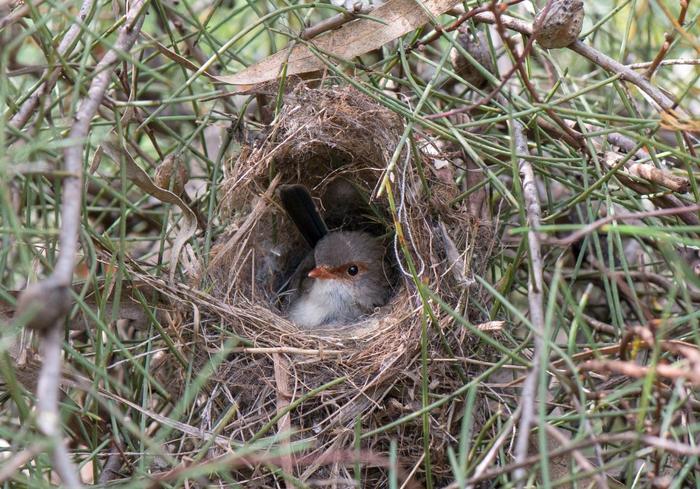Baby birds hatch with ability to mimic mom
Wrens call to their chicks in the egg
Peer-Reviewed PublicationIMAGE:
FLINDERS UNIVERSITY ANIMAL BEHAVIOUR LECTURER DR DIANE COLOMBELLI-NÉGREL WITH A MALE SUPERB FAIRYWREN
view moreCREDIT: FLINDERS UNIVERSITY
Singing a gentle lullaby can help put a human baby to sleep but its usefulness in the low grassland swaying nests of Australian songbirds takes maternal ‘singing’ to even greater heights.
Bird ecologists from around the world, including the University of Vienna and Flinders University, have shown an native wren mother's signature call to her eggs helps to give her newborn their distinctive call for food – helping these fairywren species to bond with and prepare their young for the real world.
By calling to them in the egg, the new study due for publication in The American Naturalist (now in pre-print) found the nestlings responding favourably to the mother's 'B element' vocalisation.
The special individual calls by Superb fairywrens (Malarus cyaneus) appear to 'teach' their unborn chicks family’s distinct call type both inside the egg and emerging into the nest, says Flinders and University of Vienna Professor Sonia Kleindorfer, who founded the Flinders University BirdLab 20 years ago.
The study of fairywrens (songbird family Maluridae) was conducted by Flinders University scientists in South Australia at the Cleland Conservation Park study, with help from the Department of Environment and Water.
“In eight species of fairywren and grasswren, females produce a B element to their embryos that is the mother's signature element and unique to each female. This B element is also the nestling begging call produced shortly after hatching,” says Professor Kleindorfer.
“In this study, we show that female songbird mothers produce a vocal signature element to their embryos that is later produced by their nestlings as a begging call.
“Nestlings produce calls with greater vocal copy similarity between their mother's signature call and their begging call when mothers called slowly to the embryo.”
Professor Sonia Kleindorfer and Flinders University’s Dr Diane Colombelli-Négrel say extended studies by the BirdLab research is giving new insights into the extraordinary female vocalisation behaviour of Australian songbirds that has long been overlooked.
"Nestling begging calls resemble maternal vocal signatures when mothers call slowly to embryos," says Dr Colombelli-Négrel.
“In this study, we show maternal behavior that is concordant with pupil-directed vocalization behavior when mothers call to their embryos. Mothers with slow call rate had offspring with enhanced learning (greater vocal copy similarity) of a vocalisation experienced in ovo.”
In each species, other element types in addition to the B element were also produced by mothers calling to their embryos. Our next paper asks: why these other element types as well? (turns out, to reduce the risk of habituation to the B element).
The article - Nestling begging calls resemble maternal vocal signatures when mothers call slowly to embryos (2023) by Sonia Kleindorfer, Lyanne Brouwer, Mark E Hauber, Niki Teunissen, Anne Peters, Marina Louter, Michael S Webster, Andrew C Katsis, Frank J Sulloway, Lauren K Common, Victoria I Austin and Diane Colombelli-Négrelhas been accepted for publication in pre-print by The American Naturalist (University of Chicago Press). DOI: 10.1086/728105
Collaborators on the project are from the ANU, James Cook University, University of Illinois Urbana, Cornell University, Monash University, University of California Berkley and Western Sydney University.
Superb fairywren chicks

Superb fairywren chicks
A female superb fairywren checks her nest
A female superb fairywren checks her nest
A superb fairywren nest was used in the scientific study
A superb fairywren nest was used in the scientific study
CREDIT
Flinders University
Flinders University
JOURNAL
The American Naturalist
METHOD OF RESEARCH
Observational study
SUBJECT OF RESEARCH
Animals
ARTICLE TITLE
Nestling begging calls resemble maternal vocal signatures when mothers call slowly to embryos
No comments:
Post a Comment